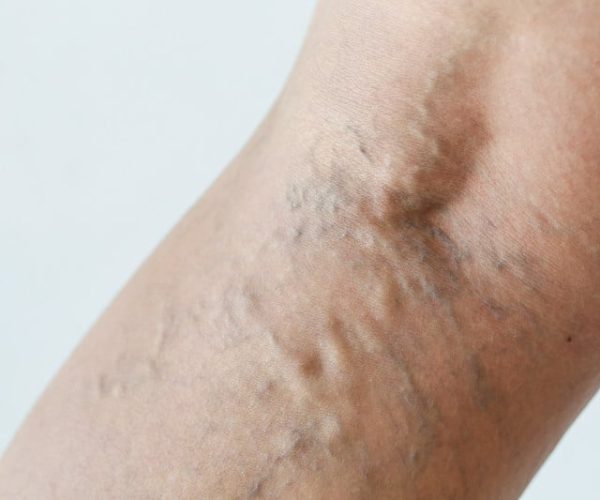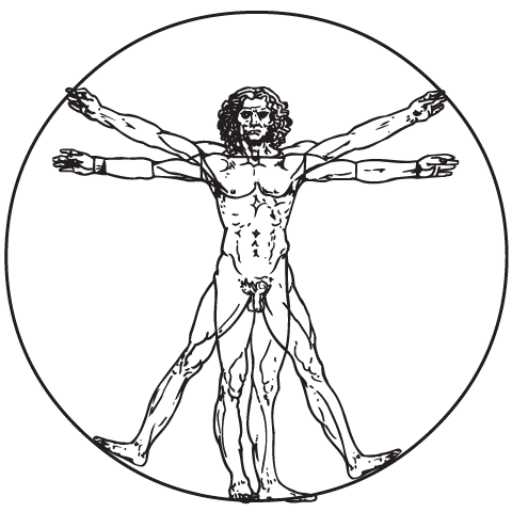Varicose vein removal Vienna
Veins are blood vessels that are supposed to transport the used, deoxygenated blood back to the heart against the force of gravity. To fulfil this task, vein valves are built into the veins to prevent the blood pumped towards the heart from flowing back again.
A number of factors lead to the fact that the Veins expand and then take the form of Varicose veins or Spider veins become visible externally. The causes for the appearance of varicose veins must be clarified by a doctor in any case, as they can be signs of more serious diseases.

Table of contents
Removing varicose veins in Vienna - causes, symptoms and treatment options
The task of the veins in the blood circulation is to collect the oxygen-poor blood in the muscles, skin and bones and transport it towards the heart. In the process, the venous valves prevent the blood from flowing back again. From the heart, the oxygen-rich blood is returned through the arteries. If the venous valves no longer function, the blood flows back partially and leads to overpressure of the leg vein system.
Nodular dilations of the superficial veins, which mainly occur on the legs, are called varicose veins or varicose veins.
What are the causes of varicose veins?
The most common cause for the formation of varicose veins is an inherited weakness of the connective tissue, which is associated with a weakening of the vein wall and the venous valves. This leads to a disturbed return flow of blood into the deep veins.
Varicose veins are mainly caused by heredity, obesity, standing for long periods of time, too little exercise and pregnancy. As a preliminary stage of weak veins, bluish-red venous patches often appear on the upper and lower legs (spider veins), which are mainly perceived as cosmetically disturbing.
Symptoms of venous disease:
- Increased appearance of spider veins
- visible varicose veins
- stabbing or pulling pain
- Swelling or oedema in the ankle area
- heavy legs
- Calf cramps, especially at night
- Itching and dark discolouration of the lower legs
Such complaints should always be clarified by an experienced vein specialist. In Dr. Orasche's practice you will find competent advice, state-of-the-art treatment methods and an experienced team.
If venous disease persists without adequate varicose vein treatment, there is a risk of phlebitis, deep vein thrombosis or open leg.
What complaints and complications can occur?
The varicose veins themselves do not initially cause any symptoms. However, the associated blood circulation disorder can cause swelling of the legs, which is noticeable with a feeling of tension, muscle cramps, hardening of the calf or heavy, tired legs. Varicose veins can lead to painful inflammation (phlebitis). This often leads to the formation of blood clots that can develop into thrombosis in the deep veins. If the blood clot detaches there, it can cause a pulmonary embolism. Chronic venous insufficiency, in its advanced stages, can manifest itself in wounds on the lower legs, the so-called open legs (ulcus cruris).
Examination methods:
Anamnesis, diagnostics by means of ultrasound
Removing varicose veins in Vienna - what treatment options are there?
- Sclerotherapy (sclerotherapy)
- Laser therapy
- Radiofrequency therapy
- VNUS Closure System
- Operation
- Compression treatment
Sclerotherapy:
Low-risk sclerotherapy is suitable for side branch and spider vein varicose veins. A truncal varicosis can also be treated with foam sclerotherapy, but there is a high recurrence rate. A sclerosing agent is injected into the varicose vein to cause an artificial inflammation of the vein, which leads to a transformation of the varicose vein.
Radio frequency / laser treatment:
This procedure is a minimally invasive alternative to stripping, in which the diseased vein is closed from the inside. The vein wall is heated, causing the vessel to shrink and sealing the inside of the vein walls. The blood flow is channelled through a healthy vein.
VNUS - Closure System:
This minimally invasive procedure, which can be performed on an outpatient basis, is a modern alternative to vein stripping. After administering a local anaesthetic, a small incision is made in the vein and then a radiosonde is inserted. Heating to 85 degrees causes the vein wall to contract and close. After the probe is pulled out, the small wound is glued. The wall of the vein turns into scar tissue, which is broken down by the body itself. A special compression stocking must be worn for three weeks.
Operation:
The Crossectomy is the most traditional inpatient treatment method. The diseased vein and all secondary branches are cut off and severed.
Under the Stripping is the removal of the diseased vein with the help of a probe. Stripping can also be done from the outside (external phlebectomy).
Compression treatment:
If surgery cannot be performed for medical reasons, compression stockings can be used to relieve the symptoms.
Frequently asked questions about varicose vein removal Vienna
How can you strengthen the veins?
- Drink enough: 2 litres of water or herbal tea
- Movement - little sitting and standing
- Avoid obesity - high-fibre diet
- Do not wear tight clothing (leggings)
- Shoes with slightly raised heels
- cold showers, Kneipp treatments, avoidance of heat and sun
- Raise your legs more often
Are there any dietary supplements that help?
- Drinking buckwheat tea - protects the vessels
- Apply horse chestnut gel or apple cider vinegar
- Lots of vitamin C, magnesium, enzymes
- Ginger, garlic - anti-inflammatory
- OPC (grape seed extract) improves blood circulation
- organic silicon - provides more elasticity
Varicose veins treatment overview
Sclerosing varicose veins
Firstly, a medical history and vein screening is carried out using ultrasound.
In foam sclerotherapy, a special foam (a mixture of a sclerosing agent and air or CO2) is injected into the affected varicose vein. The foam displaces the blood from the vein and causes inflammation of the vein wall, which ultimately leads to the vein closing.
A session usually lasts between 20 and 30 minutes. The exact time required depends on the number and size of the varicose veins to be treated.
The number of sessions required varies depending on the severity of the varicose veins and can be between 1 and 4 sessions. In some cases, more sessions may be necessary.
Foam sclerotherapy is generally well tolerated and causes only minor pain. Patients usually report a slight burning or pressure sensation during the injection.
After treatment, patients are usually able to resume socialising immediately. However, it is recommended to wear compression stockings for a few days and to refrain from heavy physical activity.
The possible side effects include
- Temporary skin discolouration (brown discolouration)
- Small bruises at the injection site
- Short-term swelling or redness
- In rare cases, allergic reactions or thromboses may occur
First ordination: 180,– €
Treatment: from 250,- €*
*Guide prices: The treatment costs depend on the type and number of varicose veins to be treated.
Removing varicose veins with laser
Firstly, a medical history and vein screening is carried out using ultrasound.
In laser therapy, a thin laser fibre catheter is inserted into the affected vein. The laser beam heats the vein wall from the inside, causing the vein to shrink and eventually close. The blood flow is diverted into healthy veins.
A session usually lasts between 30 and 60 minutes. The exact duration depends on the size and number of varicose veins to be treated.
In most cases, only one session per affected vein is required. In some cases, follow-up treatment may be necessary, but this is rather rare.
Laser therapy is minimally invasive and usually causes only minor pain. Patients often feel a slight pulling or burning sensation during and after treatment. A local anaesthetic is used to increase comfort.
After laser therapy, patients are usually fit for socialising again immediately. However, it is recommended to wear compression stockings for a few days and to avoid strenuous physical activity.
The possible side effects include
- Temporary skin discolouration
- Minor bruising or swelling at the treatment site
- Slight pulling or burning sensation along the treated vein
- In rare cases, nerve damage or deep vein thrombosis may occur
First ordination: 180,– €
Treatment: from 250,- €*
*Guide prices: The treatment costs depend on the type and number of varicose veins to be treated.
Patient testimonials





